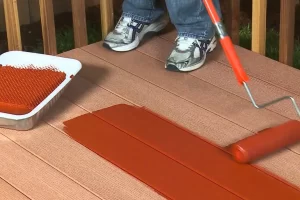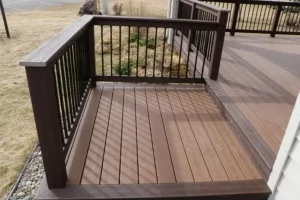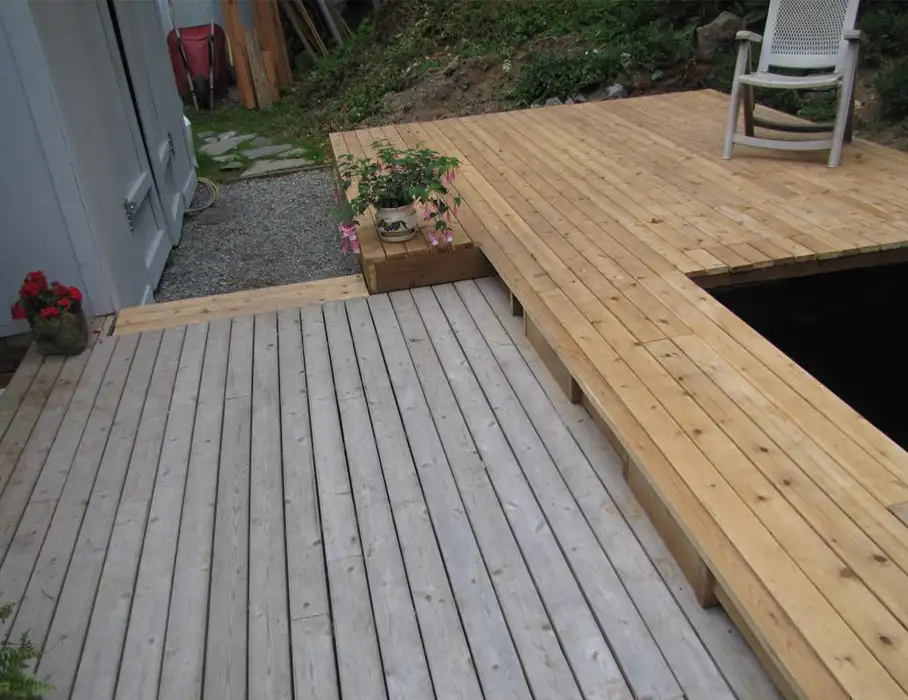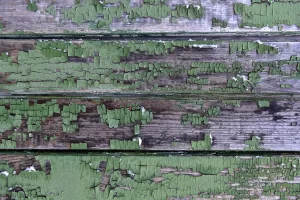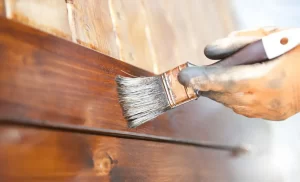You’re relaxing on your deck, enjoying a cold drink on a hot day, when you notice a stain on the deck. At first, you think it’s just a shadow, but when you take a closer look you realize it’s actually a large dark stain on the wood. You try to ignore it, but every time you sit on your deck you can’t help but see it.
Eventually, you decide that you need to do something about it. But what? You could try painting over the stained deck, but will that really work? Is it worth the effort?
Painting over a stained deck can sometimes be successful, but it’s not always worth the effort. It all depends on the nature of the stain and how big it is. If you’re willing to put in the time and effort necessary to do the job right, then go for it. Otherwise, you might be better off just living with the stain.
Can you Paint the Deck if it is Already Stained?
You might think that since your deck is already stained, there’s no point in trying to paint it. But what if we told you that painting your stain deck could actually be a good idea? Here are a few reasons why:
1) Painting provides an additional layer of protection against the elements, helping to extend the life of your deck.
2) It can give your stained deck a whole new look, injecting some much-needed color into your outdoor space.
3) It’s a relatively inexpensive way to transform your deck, and it’s a lot less work than building a new one!
So before you write off the idea of painting your deck, consider all of the potential benefits. You might just be surprised at how easy and rewarding it can be.
How to Paint a Deck that’s been Stained? 7 Steps:
Step 1: Clean the stained deck
Before painting your stain deck, it’s important to clean it first. Otherwise, the paint won’t adhere properly and the deck will quickly become stained again. But don’t worry – with a little elbow grease, you can have your deck looking like new in no time.
Here’s how to clean a stained deck:
- Start by sweeping away any loose dirt or debris.
- Using a garden hose, spray down the entire surface of the deck.
- Mix up a solution of 1 part bleach with 3 parts water. scrub the solution into the stains with a stiff brush.
- Rinse the area well with the garden hose and let it dry completely before painting.
With these simple steps, you’ll be on your way to enjoying your newly painted deck for years to come!
Step 2: Sand the stained deck.
Deck staining is a necessary evil. If you want your deck to look good, you have to put in the work to sand and stain it regularly.
However, this process can be time-consuming and costly. By sanding your deck before you stain it, you can save money and extend the life of your stain job. In addition, sanding provides a smooth surface for the stain to adhere to, resulting in a more even appearance.
For these reasons, it is always best to sand your deck before you stain it. With a little elbow grease, you can achieve amazing results that will last for years to come.
Step 3: Prime the deck
No one wants to paint a deck only to have the paint peel off a few months later. That’s why it’s important to prime the deck before painting.
Priming provides a barrier between the paint and the wood, protecting the paint from the elements and ensuring that it adheres to the surface. It also helps to seal in any existing stains or damage, preventing them from causing further problems down the line.
In short, priming is an essential step in any painting project and one that should not be skipped. So before you start painting your stained deck, make sure to prime it first. Your future self will thank you for it.
Step 4: Paint the deck
painting the deck is a necessary step to take before painting the house. A fresh coat of paint on the stained deck can also provide a new look to an old house.
Firstly apply a thin coat of paint and let it dry. After the first coat is dry apply a second coat of paint. It is better to use a thicker coat of paint as it will provide better coverage and protection against the elements.
Use a paintbrush to apply the paint around the edges of the stained deck. For best results, use a roller to apply the paint in long, even strokes. Work your way from one end of the deck to the other, painting as you go.
Step 5: Let the paint dry
Let the paint dry. It’s a simple instruction, but one that is often ignored. And yet, taking the time to let the paint dry can make all the difference in the finished product.
Allowing paint to dry fully between coats helps to prevent smudging and streaks, and gives the paint time to set properly. This results in a smoother, more even finish that is less likely to chip or peel.
In addition, taking the time to let the paint dry also helps to ensure that the underlying layer of paint is protected from damage.
Step 6: Apply a sealant
Applying a sealant to a freshly-painted deck is an important step in the painting process – and one that is often overlooked. A quality sealant will not only help to protect the paint job from the elements, but it will also extend the life of the deck by preventing fading and wear.
When selecting a sealant, be sure to choose one that is compatible with the type of paint you used. For example, if you used oil-based paint, be sure to select a sealant that is also oil-based. Applying a sealant may seem like an extra step, but it’s one that is well worth taking.
Step 7: Enjoy your new deck!
Now that your deck is painted, you can sit back and enjoy your handiwork. Your newly painted deck will add color and style to your outdoor space, and it will be much easier to keep clean. Who knows, you might even find yourself spending more time outdoors!
Choose the finish that best suits your stained deck.
What is the Best Paint for the Stained Deck?
If your deck is in need of a makeover, one of the best ways to improve its appearance is to give it a fresh coat of paint. But with so many different types of paint on the market, it can be hard to know which one to choose.
When it comes to painting a stained deck, there are three main types of paint
Oil-based paint
water-based paint
latex paint
Each type of paint has advantages and disadvantages, so select the right sort of paint for your stain deck with care. It’s preferable to hire an expert.
What Factors should you Consider when Selecting the Best Paint for the Stained Deck?
You walk outside onto your deck and are immediately transported to an oasis; your own personal paradise. But what kind of paint should you use? Here are three things to consider when selecting paint for your stained deck.
1. Shade:
A fresh coat of paint can completely change the look of your stained deck – so make sure to select a paint color that you love! Consider whether you want a light or dark shade of paint and whether you want to maintain the same color scheme or try something entirely new.
2. Finish:
There are three main types of paint finishes – glossy, satin, and matte.
Glossy finishes reflect light and are easy to clean, making them ideal for high-traffic areas.
Satin finishes have a subtle sheen and offer good resistance to stains and scratches.
Matte finishes provide excellent coverage but are more susceptible to dirt and debris buildup.
3. Durability:
Depending on how much foot traffic your deck gets, you’ll want to select a paint that is durable enough to withstand regular wear and tear. Acrylic paints are typically the most durable, while oil-based paints offer good protection against UV rays and extreme temperatures.
4. Your budget:
Of course, your budget is also an important factor to consider when selecting paint for your stained deck. Set a realistic budget for your project and then compare prices to find the best deal.
If you take the time to select the right type of paint, your deck will look amazing for years to come!
5. The climate you live in:
When selecting paint for your stained deck, be sure to take the climate you live in into account. If you live in an area with high humidity, choose water-based paint.
If you live in a region with severe weather conditions, opt for oil-based paint. And if you’re not sure which type of paint to choose, ask a professional for advice.
No matter which type of paint you choose, be sure to thoroughly clean your deck before applying any new coats – this will help ensure that the paint adheres properly and lasts for years to come!
Why Should you Remove the Stain from your Deck Before Painting it?
No one wants a stained and dirty deck. Not only is it an eyesore, but it can also be dangerous. Slipping and falling on a muddy surface is not only unpleasant but can also lead to serious injuries. That’s why it’s important to remove the stain from your deck before painting it.
Not only will this give you a clean slate to work with, but it will also help to extend the life of your deck. When it comes to removing stains, there are a few different options. You can either use a power washer or a hose with a high-pressure nozzle. For more stubborn stains, you may need to use a chemical stripper.
Whichever method you choose, make sure to follow the instructions carefully. Once the stain is gone, you’ll be one step closer to having a safe and beautiful deck.
Is it Better to Paint the Stained Deck Without using Primer?
A freshly painted deck is the perfect summer hangout spot. But before you start painting, it’s important to decide whether or not to use a primer. On one hand, primer can help to cover up existing stains and provide a smooth base for the paint.
In addition, it can be time-consuming and add an extra layer of cost to the project. So, what’s the best course of action? It depends on the condition of your deck and your personal preferences.
If you’re working with an old deck that has deep stains, the primer may be necessary to achieve a consistent finish. However, if you’re working with a newer deck or one that doesn’t have severe staining, you may be able to get away with skipping the primer.
Ultimately, the decision comes down to personal preference and the condition of your deck.
Conclusion:
Stained deck paint can be a daunting task, but it doesn’t have to be. By following these simple steps and by using the right products, you can breathe new life into your deck without breaking the bank. Have you tried painting a deck that’s been stained? if not then,
Follow these simple steps for how to paint a deck that’s been stained, and you’ll be on your way to enjoying your beautiful new deck in no time!


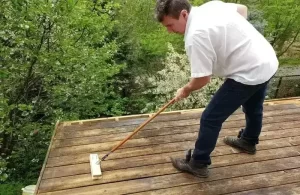
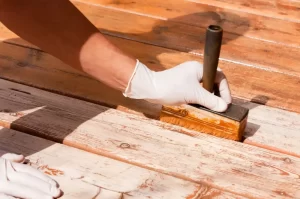

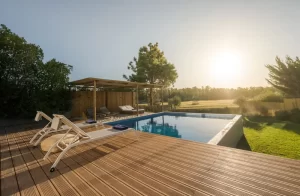
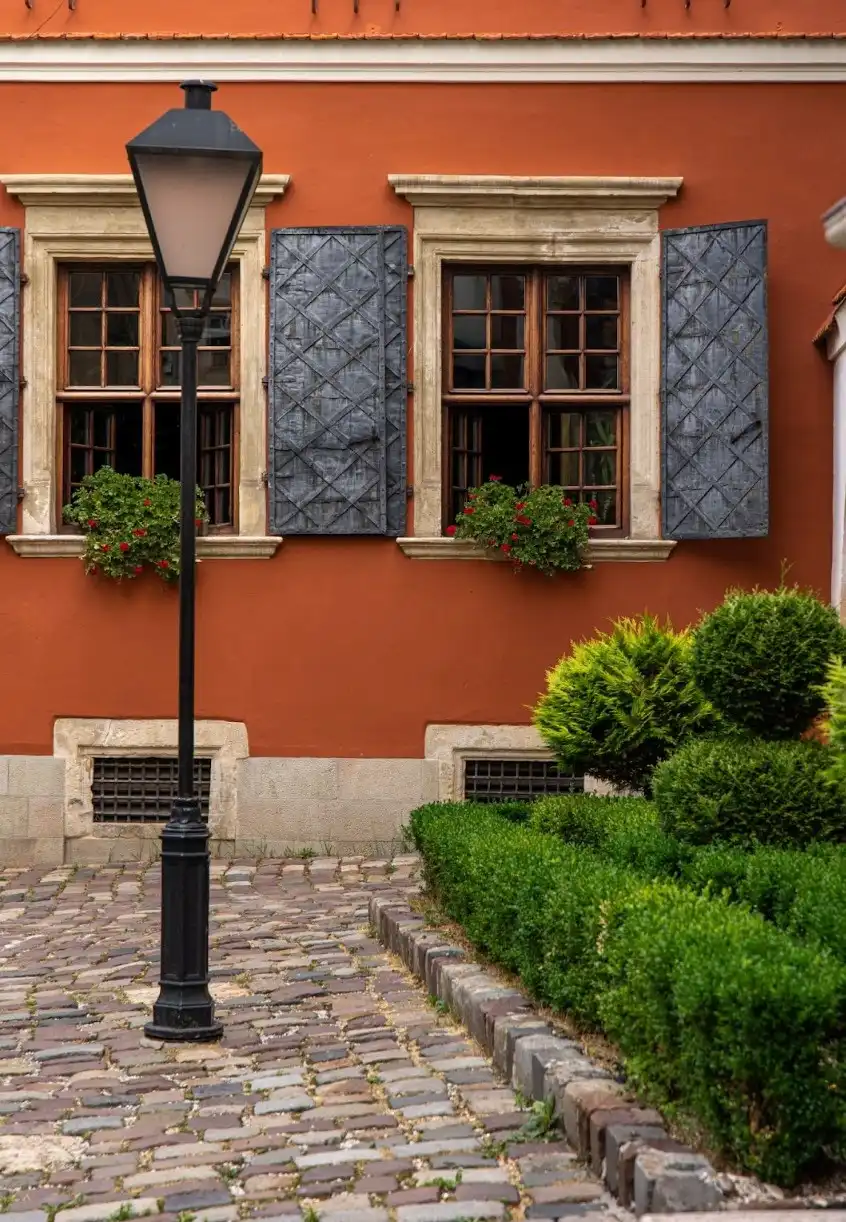


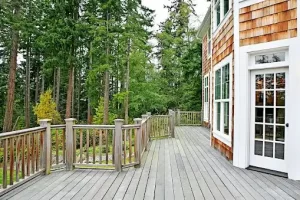

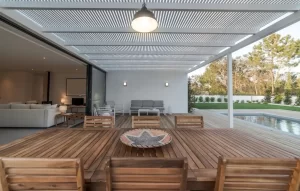

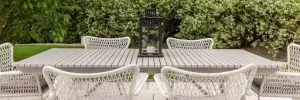

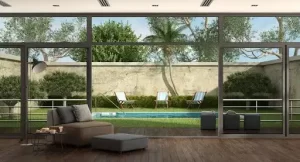

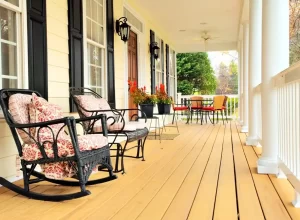
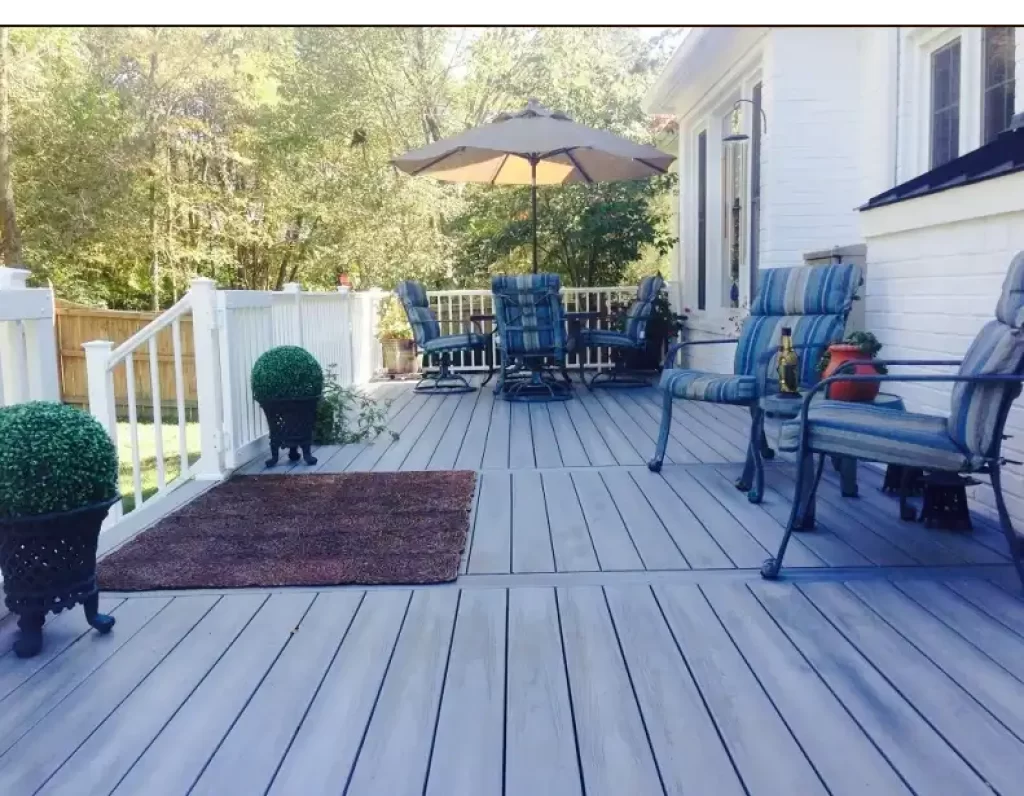
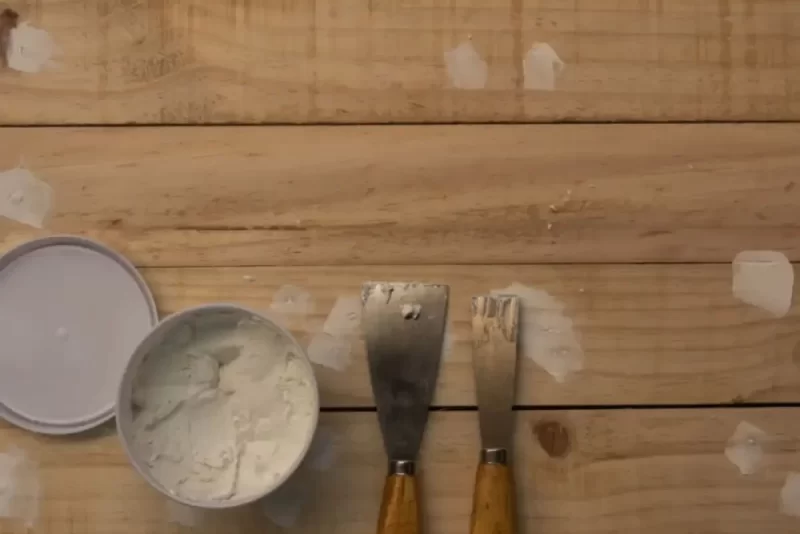

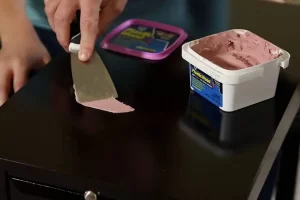
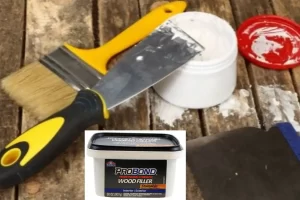
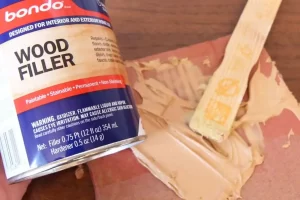
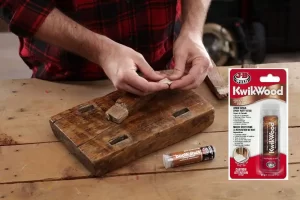
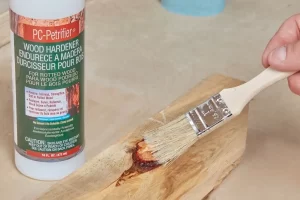
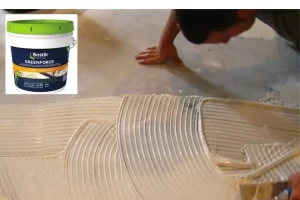
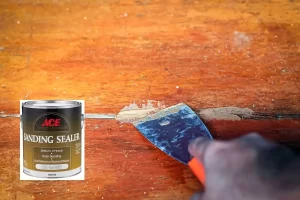
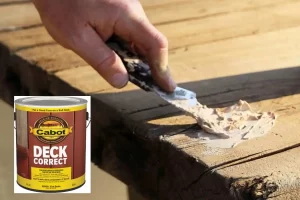
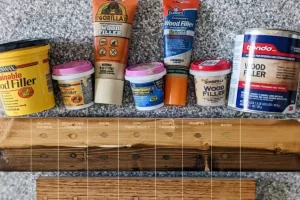
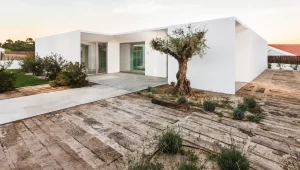
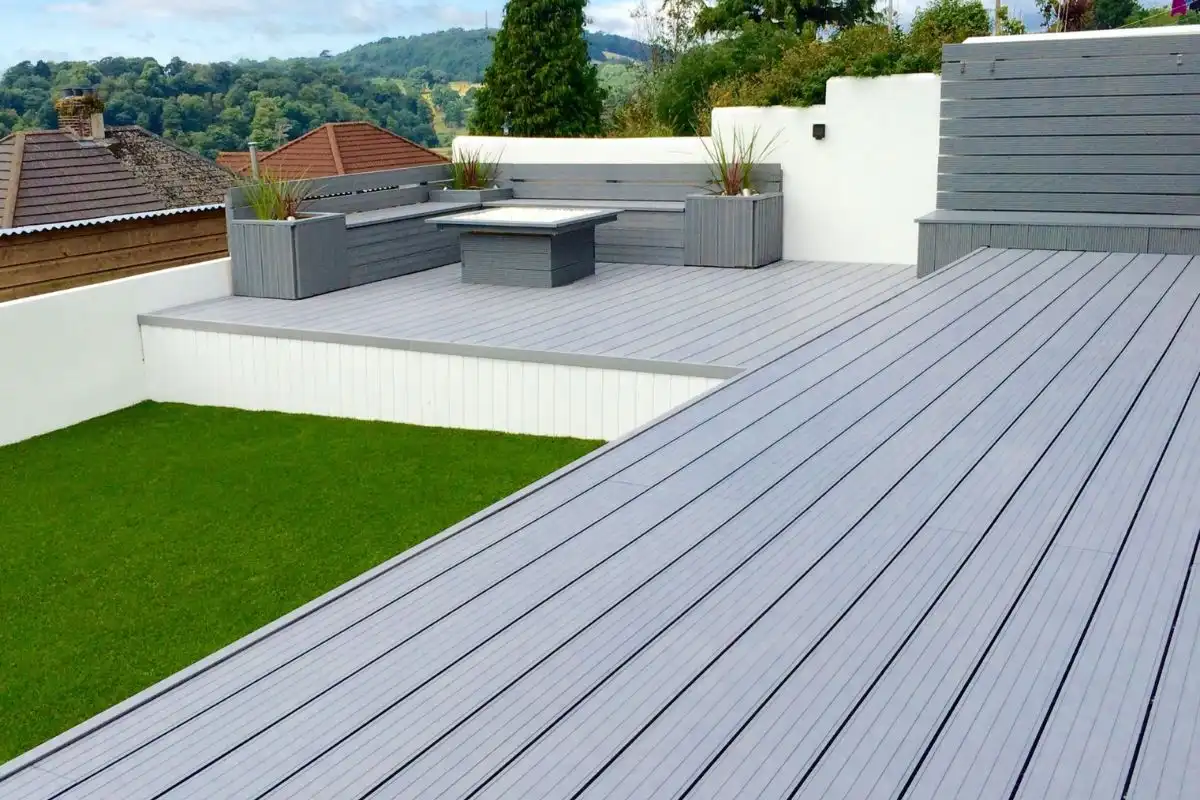
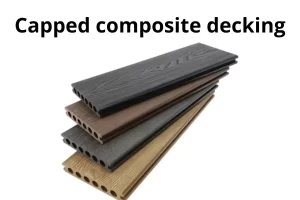 Capped composite decking is made from recycled wood fibers and plastic. Wrapped in a tough-as-nails cap, it’s built to withstand sun, rain, and foot traffic without showing wear and tear. Capped composite decking is also easy to clean and resists stains and fading.
Capped composite decking is made from recycled wood fibers and plastic. Wrapped in a tough-as-nails cap, it’s built to withstand sun, rain, and foot traffic without showing wear and tear. Capped composite decking is also easy to clean and resists stains and fading.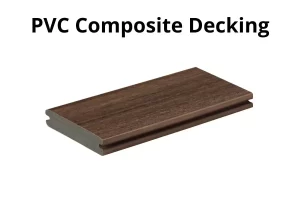 PVC composite decking is an attractive and durable option for outdoor decks. The material is made of a blend of plastic and wood fiber, which makes it resistant to rot and insect damage. Pvc decking is often durable and inexpensive to maintain; PVC Composite Decking is perfect for anyone on a budget.
PVC composite decking is an attractive and durable option for outdoor decks. The material is made of a blend of plastic and wood fiber, which makes it resistant to rot and insect damage. Pvc decking is often durable and inexpensive to maintain; PVC Composite Decking is perfect for anyone on a budget.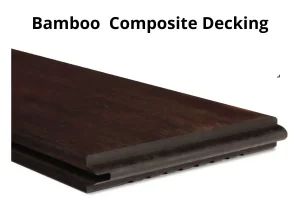 Bamboo composite decking is the perfect choice for those who love the look of natural wood but don’t want the hassle of maintaining it. Made from a mix of bamboo and recycled plastic, this decking is not only attractive and easy to care for, but it’s also eco-friendly.
Bamboo composite decking is the perfect choice for those who love the look of natural wood but don’t want the hassle of maintaining it. Made from a mix of bamboo and recycled plastic, this decking is not only attractive and easy to care for, but it’s also eco-friendly.